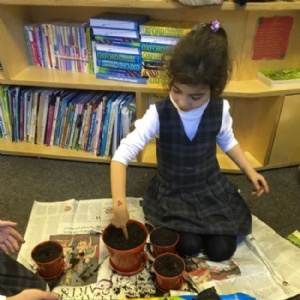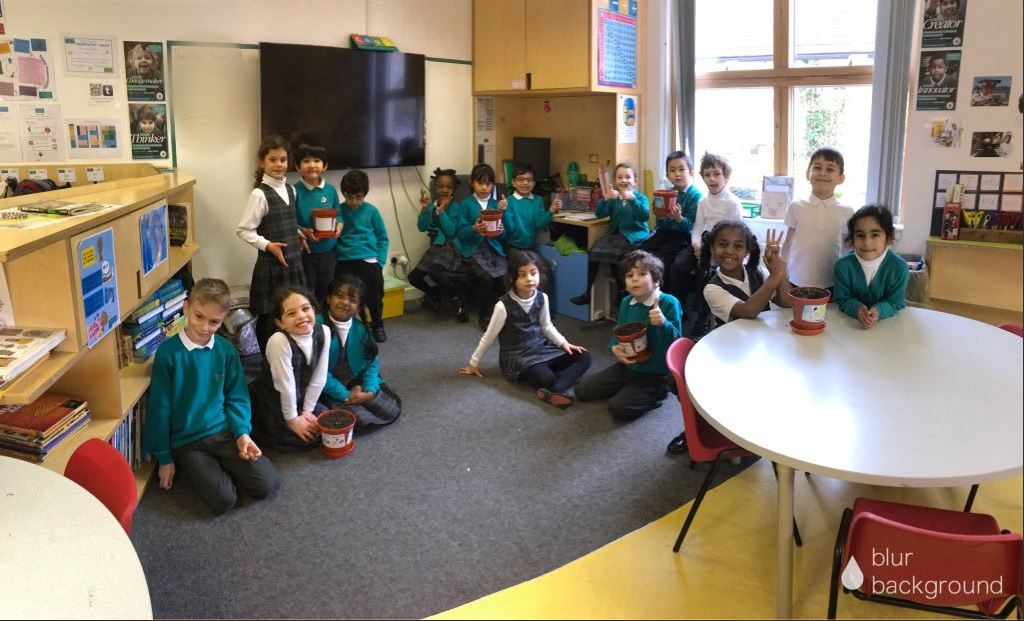
Community Plant Project
Published on 09/05/18

Keri Lennon, Year 2 teacher at the Stephen Perse Pre-Prep, shares her thoughts on the importance of community projects and learning by visiting the outside world.
A school building provides a setting for learning to occur. It is a place for children to develop academic skills, social skills, thinking skills; to better understand the world around them. Here at SPF Pre-Prep it is recognised that pupils also learn from visiting the world outside of the school gates in order to apply such life skills within the community. Over the Spring term City Year 2 had one such opportunity in the form of a ‘community plant project’ established between the class and a local care home.
Over the course of the term, the children from 2C and residents of the care home took part in a series of plant focused sessions. These sessions included sharing plant related stories, potting and caring for plants and sketching plants together. The care home visits were sandwiched between fortnightly planning, learning, preparing and reviewing sessions at school. Within the school-based lessons, the children reflected on their learning whilst at the care home and decided what they would need to do to be ready for their next visit.
A key aspect of preparation was to consider how to interact with and present information to the residents of the care home. Speaking and listening skills were developed, body language and social cues considered and general civilities and respectfulness discussed. The children took pride in presenting themselves clearly and confidently. They began to develop a sense of target audience by considering whether they were talking to the home’s activities coordinator, the receptionist or the residents themselves. The result for pupils was a heightened understanding of ways and means of communicating effectively with different members of the community.
Whilst at the care home, the children gained a greater understanding of daily life as lived by other members of the community. They were intrigued by the various sights and sounds of the care home and keen to discuss how different equipment worked and what it was used for. They learned that the residents went outside in the garden, or watched television and were pleased to discover that they also really enjoyed singing! From this, the children were able to compare and contrast the lives of others in the community with aspects of their own school and home life.
Once back in the classroom the children reflected on what they had gained from the experiences as well as what they themselves had brought to the residents. One child noted that the care home had bedrooms for the residents to stay in, prompting a discussion of why this might be and reflections on how our needs change as we progress through life. They commented on how happy the residents appeared during the visits and reflected on life stories they had heard. A classroom display was created from the resident’s plant sketches and the care home made a similar one from the children’s drawings. This enabled pupils to feel as if an aspect of the community was being brought back into the classroom, as well as seeing their own work have an impact on the community.
"Children will not spend their whole lives inside a classroom"
Through community projects, such as this one, children gain an important awareness that their lives are part of something much more than the classroom they learn in. They allow pupils to see how the learning they complete in school can have a direct impact on the lives of others in the community and that, through this, they have the power to make a difference in the wider world around them. Going forwards, the aim is for school-care home sessions to be even more participant led, with the children and residents deciding what they want to focus on within termly projects.
Keep up with the day to day activities in the Pre-Prep on Twitter @SPFPreprep.
For more thought leadership, read our other school blogs.
